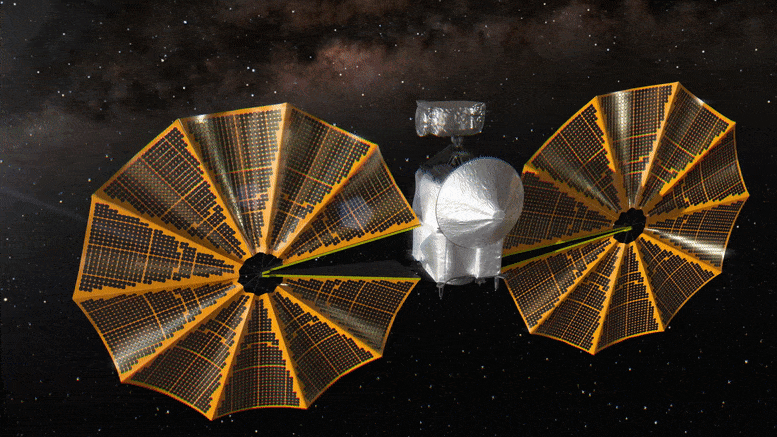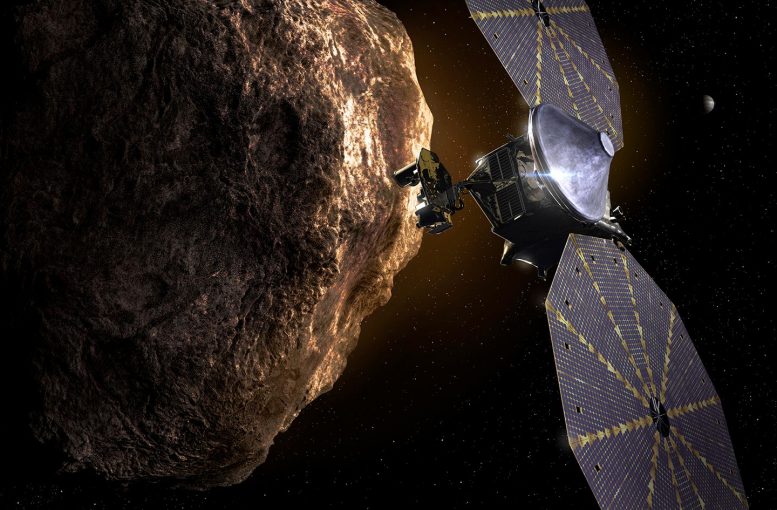begin quote from:
Following a Successful Launch, NASA’s Lucy Spacecraft Hits a Solar Array Deployment Snag
Following a successful launch on October 16, 2021, analysis of NASA’s Lucy spacecraft systems show the spacecraft is operating well and is stable. Lucy’s two solar arrays have deployed, and both are producing power and the battery is charging. While one of the arrays has latched, indications are that the second array may not be fully latched. All other subsystems are normal. In the current spacecraft attitude, Lucy can continue to operate with no threat to its health and safety.
The team is analyzing spacecraft data to understand the situation and determine the next steps to achieve full deployment of the solar array.
During its 12-year mission, NASA’s Lucy spacecraft will explore eight asteroids. It will explore more asteroids than any previous mission. On its way out to the Trojan asteroids, Lucy will fly by the main belt asteroid (52246) Donaldjohanson on April 20, 2025. There, Lucy will fly by five of these L4 Trojans: Eurybates and its satellite, Queta, on August 27, 2027, Polymele on September 15, 2027, Leucus on April 18, 2028, and Orus on November 11, 2028.
The spacecraft’s orbit will then bring Lucy back to the vicinity of the Earth for another gravity assist, and will take it again out to the distance of Jupiter. Arriving on March 2, 2033, Lucy will fly by Patroclus and its near-twin binary companion Menoetius. While the flyby of this remarkable asteroid pair will be the expected finale of the mission. Lucy will remain on a stable orbit which will enable it to visit the Trojan swarms over and over again for many thousands, and possibly millions, of years.



No comments:
Post a Comment